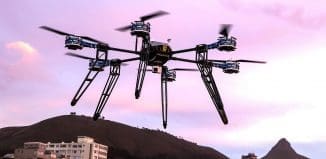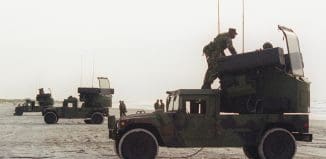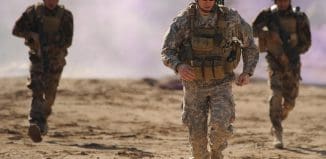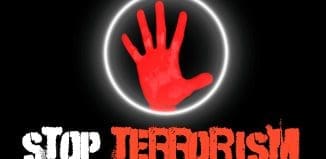Evaluation of ISIS’s weaknesses
This post is also available in:  עברית (Hebrew)
עברית (Hebrew)
Written by The Meir Amit Intelligence and Terrorism Information Center

1. In recent months, ISIS has managed to brand itself in the Arab-Muslim world and in the West as a powerful terrorist organization with exceptional capabilities. Its military successes, its governmental consolidation and the fact that it has been joined by organizations and operatives, versus the weakness of its enemies and rivals, have fed this image, in some cases leading to ISIS’s enhancement beyond its actual power and capabilities.
2. However, an analysis of ISIS’s power and patterns of action indicates the organization’s weaknesses and a certain vulnerability which the US might take advantage of. Is main weaknesses are:
A. The large gap between ISIS’s actual power and its pretensions: ISIS has a small core of operatives (their number is estimated at between 25,000 and 31,000) through whom it controls the millions of residents and significant parts of the territory of Iraq and Syria. The small number of its operatives may make it difficult for ISIS to defend itself against massive military ground initiatives, if and when regular forces that are superior in terms of size and quality are deployed against it. Moreover, if ISIS’s military power weakens significantly, ISIS may find it hard to impose effective control over the local population over time, let alone realize its far-reaching ambitions (taking over Iraq and Syria and other countries).
B. The weakness of the coalition put together by ISIS in Iraq: In ITIC assessment, it is a loose coalition composed of Salafist-jihadi organizations that have been joined by Sunni tribes and Ba’athist Iraqi military personnel and officials from the time of Saddam Hussein. There is no ideological adhesive bonding them, and the cooperation between them is based on a convergence of interests, centering on hostility to Shi’ites and the central government in Baghdad (which is perceived as Shi’ite-affiliated). In addition, ISIS’s excessively brutal methods and its attempts to enforce an extreme version of Islamic law alienate it among its allies, which may abandon it when circumstances change and the momentum of ISIS’s military successes is brought to an end. The participation of tribes from the province of Al-Anbar in western Iraq in the fighting against ISIS alongside the Iraqi army, and disagreements that deteriorated into violent clashes between ISIS and a large tribe in the area of Deir al-Zor, illustrate the difficulty of preserving the coalition over time.
C. The large number of enemies versus the lack of significant allies in Syria: In the Syrian arena ISIS is forced to fight against the Syrian regime, while simultaneously having to cope with rebel organizations and the Al-Nusra Front (Al-Qaeda’s branch in Syria), both of which are hostile to it. Most of the Syrian population controlled by ISIS does not identify with its ideology and with the brutal coercion of its Islamic code of conduct. The Syrian regime, Iran and Hezbollah are hostile to ISIS and may try to harm it when circumstances permit. Moreover, the religious-sectarian schism in Syria may make it very difficult for ISIS to expand its control to other areas populated by those who are hostile to it (i.e., areas populated by Alawites, Kurds or Druze).
Register to iHLS Israel Homeland Security
D. The centrality of ISIS’s leader: ISIS has a centralized hierarchical structure revolving around the charismatic character of its leader, Abu Bakr al-Baghdadi. He is the head of the Islamic Caliphate and is the final arbiter on military, religious and governmental matters. He appoints ISIS’s leadership and institutions him and their dependence on him is absolute (as far as the ITIC knows, there is no second in command who may inherit all of al-Baghdadi’s powers in an organized fashion). Therefore, should al-Baghdadi be out the picture, it could shake ISIS and weaken it significantly, even if it does not lead to its collapse.
E. ISIS’s economic vulnerability: ISIS’s governmental and military capabilities rely heavily on its high revenues from the infrastructure, mainly the oil infrastructure (oil refining and smuggling oil products to areas not under ISIS’s control). An effective campaign against petroleum product smuggling and its production system may weaken ISIS at the military level and impair its ability to provide the local population with a governmental alternative. The United States is aware of that and from the start of the campaign has focused its aerial attack on the oil infrastructure held by ISIS. That, however, is insufficient. In the fight against the petroleum product smuggling networks, the United States will require the close cooperation of Turkey and the Kurdish autonomous region and, if possible, of the Syrian regime as well, to block the smuggling ISIS uses.
F. ISIS’s ideology: ISIS represents a radical Salafist-jihadi interpretation of Islam dating back to the Middle Ages (the Hanbali school).Although it is perceived as attractive by many young Muslims today, it school of thought is not accepted by most Muslims. Many clerics in the Arab-Muslim world and in Muslim communities in Western countries object to both its radical interpretation of Islam and ISIS’s acts of cruelty and brutality presented in the media. Most Muslims accept the moderate schools of thought. Therefore, military measures against ISIS must be accompanied by a battle for hearts and minds designed to foster moderate Islam, which finds expression in the Shafi’i and Maliki schools. Egypt (which is the target of a terrorist campaign) can play an important role and has indeed announced that it will support the fight against ISIS by providing an ideological Islamic response to the worldview it represents. In Western countries, the battle for hearts and minds must cultivate the moderate streams in the local Muslim communities, coupled with further steps to reduce the sense of alienation and discrimination among them.
3. In ITIC assessment ISIS’s main weakness is its limited power base within the Sunni population that either cooperates with it or surrenders to its authority. Its collaborations with Sunni tribes and other Sunni power centers are a marriage of convenience based on temporary common interests, which may change as the political and military situations in Iraq and Syria change. Success in the military campaign against ISIS, coupled with an American policy of providing massive assistance to influential figures and groups among the Sunni population in the areas under ISIS’s control, as the United States did in the past in Iraq, may bear fruit in the campaign against ISIS.
4. If the US and its allies continue the campaign against ISIS, investing a significant military effort in it over time, have the wisdom to take advantage of ISIS’s weaknesses and not be deterred by serious side effects liable to accompany the campaign (casualties, terrorism, criticism from within and without), then, in ITIC assessment, the campaign against ISIS may also have positive results. They will be more modest than the high expectations set by the United States, but they are more realistic. In ITIC assessment, realistic expectations are the weakening of ISIS (as opposed to its destruction); curbing the momentum of its expansion in Syria and Iraq and possibly reducing its territorial assets; improving the self-defense capabilities of local forces in Syria and Iraq and of the various countries in confronting ISIS’s terrorism (in the West and the Middle East) and responding more effectively to the foreign fighters who travel to Syria and return to their countries of origin.






























